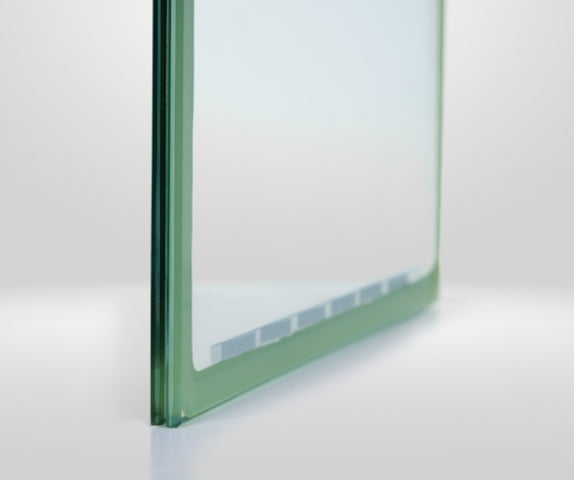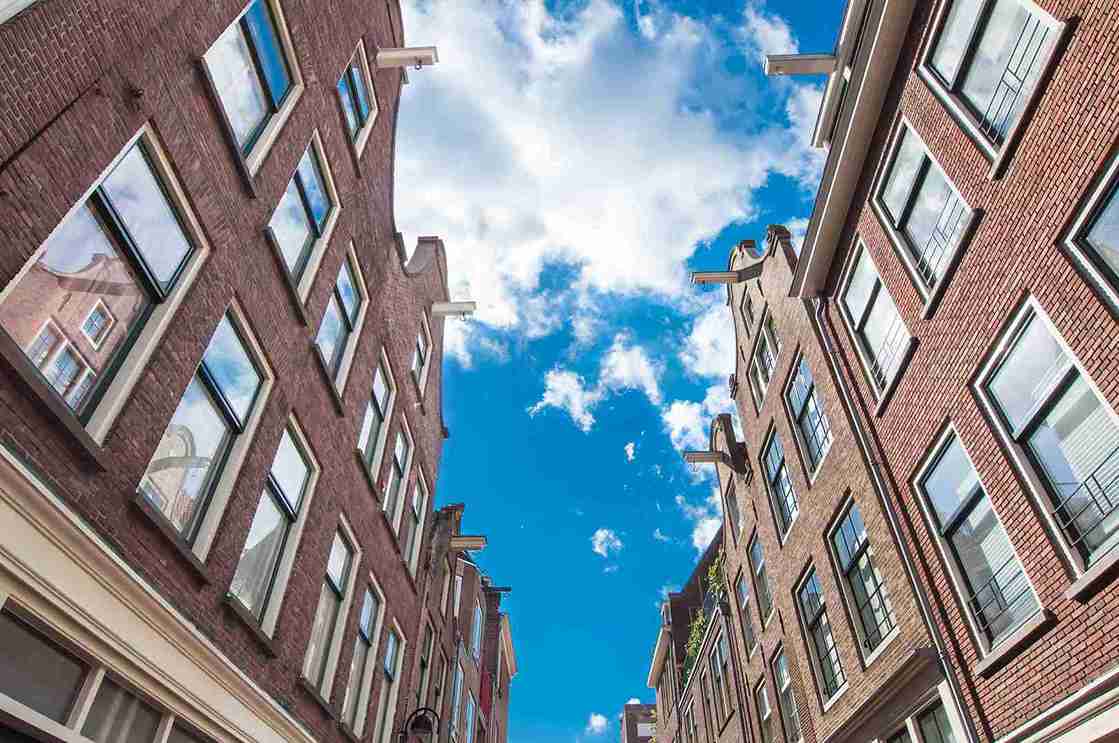BENGglas – the next generation of insulating glass!
Vacuum glass is a revolutionary step in the field of (glass) insulation. Vacuum glass is extremely thin insulating glass in which two glass plates are separated by a high vacuum space. This vacuum prevents heat and sound transmission and ensures an extremely high insulation value and sound insulation. A better result can therefore be achieved with less material than, for example, with HR++ or triple glazing. In addition to the high insulation value, this also makes the glass a lot more sustainable in terms of material use. The microscopic spacers are inherent to vacuum glass and prevent the two glass plates from imploding during the vacuum process.
BENGglas has a wide product range, each with unique appearance and product benefits.
Below we would like to explain all the product benefits for you.
Compared to other insulating glass Product benefits

The best U-value: 0.40 (regular vacuum glass has a U-value of 0.70)

Standard tempered safety glass (5 x stronger without thermal break) with the exception of BENGglas BASIC 8.15 mm

BENGglas has up to 7x fewer spacers

Significantly cheaper
BENGglas vs other insulating glass
Product range BENGglas
BENGglas has an extensive product range with different types of vacuum glass. Each type has its own product advantages and specifications. We explain the most important differences below.
BENGglas – product range
The BENGglas portfolio consists of four types of vacuum glass:
Each type has specific technical properties and appearance. This means that almost every project can be provided with a suitable vacuum glass solution.
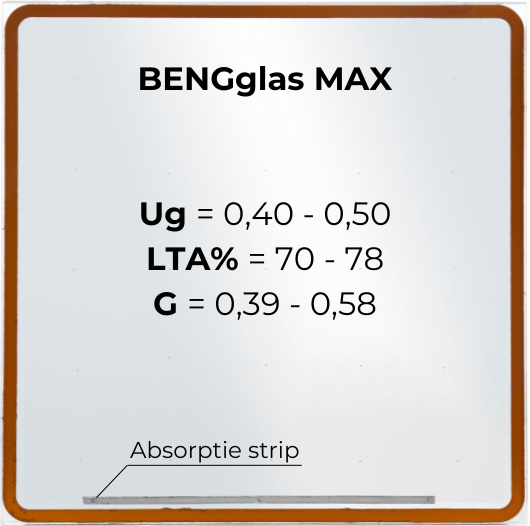
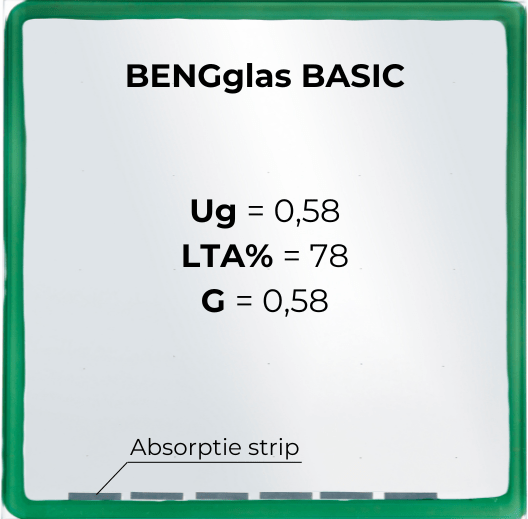
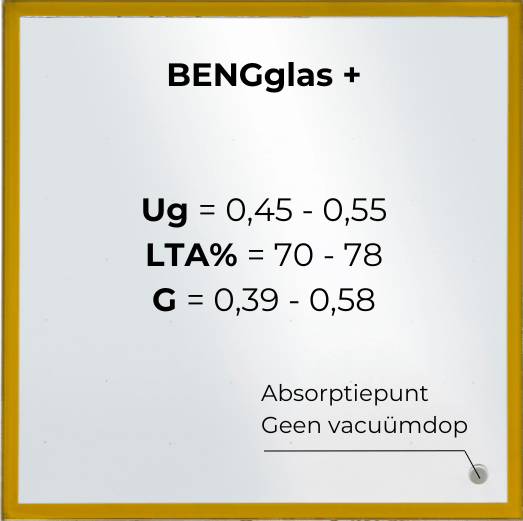
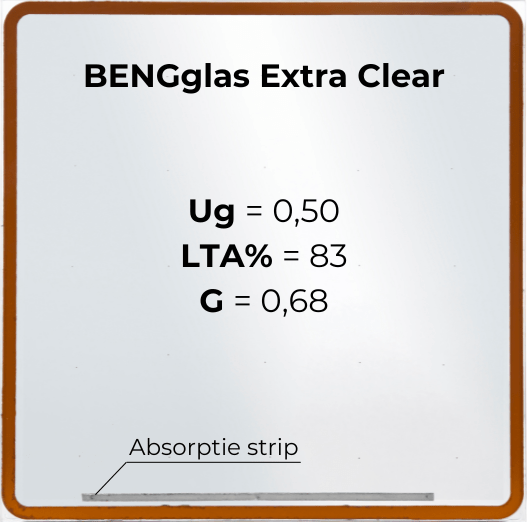

BENGglas Extra Clear – NEW!
BENGglas Extra Clear offers all the benefits of BENGglas MAX and is extra clear!
Maximum insulation, free of vacuum caps, equipped with an easy to conceal slim frame (14 mm), a glass thickness of only 8.3 mm, tempered and equipped with extra clear glass! This makes BENGglas Extra Clear the product for renovation and monumental buildings.
- LTA (light transmission value): 83%
- G-value: 0.68
- Fully tempered
- Up to 7 x fewer spacers than regular vacuum glass*
*55 mm between each spacer - Maximum size: 1,500 x 2,500 mm*
- Minimum dimensions: 200 x 230 mm
- Minimum glass thickness: 8.3 mm
- Sealing edge: 9 mm
- Slim absorption strip (approximately 14 mm high)
Also available in glass thicknesses: 10.3 mm and 12.3 mm.
2,440 x 4,200 mm will be made available
BENGglas MAX
The BENGglas MAX achieves the best insulation value without visible vacuum caps.
The sealing edge is only 9 mm (including absorption strip 14 mm), making it very easy to conceal.
- The best insulation value on the market. U: 0.40
- Fully tempered
- Up to 7 x fewer spacers than regular vacuum glass*
*55 mm between each spacer - Maximum size: 1,500 x 2,500 mm*
- Minimum dimensions: 200 x 230 mm
- Minimum glass thickness: 8.3 mm
- Slim absorption strip (approximately 14 mm high)
Also available in glass thicknesses: 10.3 mm and 12.3 mm.
2,440 x 4,200 mm will be made available

BENGglas +
BENGglas + is the ideal product where a tight 90 degree sealing edge is desired.
With this product you enjoy an unparalleled U-value of only 0.45. The absorption point will always be visible above the window slats. Always consult the technical drawing before purchasing.
- U-value: 0.45
- Fully tempered
- Up to 6 x fewer spacers than regular vacuum glass
- Maximum dimensions: 1,650 x 2,800 mm
- Minimum size: 300 x 300 mm
- Minimum glass thickness: 8.3 mm
- Visible absorption point
Also available in glass thicknesses: 10.3 mm and 12.3 mm.
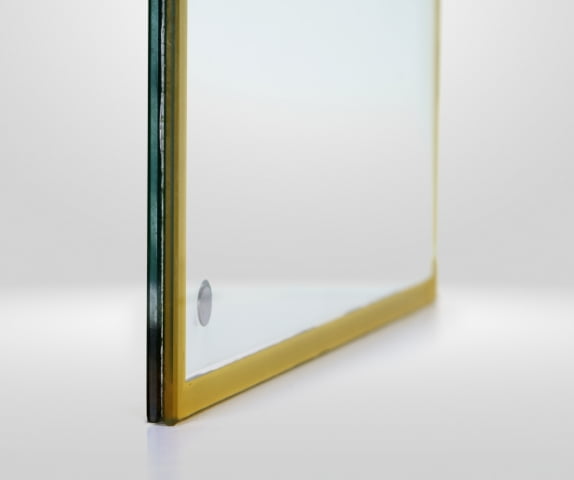
BENGglas BASIC – temporary order stop
BENGglas BASIC is the entry-level model of the BENGglas product program and therefore the most economically advantageous option. This type does not have a vacuum cap and has a thin absorption strip with a height of up to approximately 17.5 mm. The U-value of BENGglas BASIC is 0.58 and therefore insulates better than regular vacuum glass.
- U value 0.58
- Fully tempered (from 10.15 mm thickness)
- Up to 4 x fewer spacers than regular vacuum glass*
*40 mm between each spacer - Economically the most advantageous option
- Maximum dimensions: 1,650 x 2,800 mm
- Minimum size: 200 x 230*
- Sealing edge: 15 mm (incl. absorption strip long side: 17.5 mm)
- Minimum glass thickness: 8.15 mm
- Absorption strip on the bottom (17.5 mm high from the bottom)
Also available in glass thicknesses: 10.15 mm and 12.15 mm.
*Smaller possible with one side larger than 300 mm.
